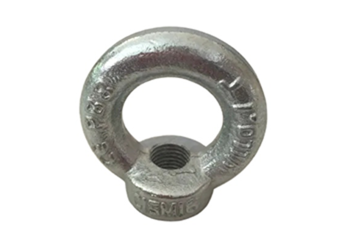Nov . 08, 2024 13:03 Back to list
I Beam Safety Clamp Ensuring Secure and Reliable Load Support for Structural Applications
Understanding I-Beam Safety Clamps Importance, Applications, and Safety Measures
Introduction
I-Beam safety clamps are essential tools utilized in various industries, particularly in construction, manufacturing, and maintenance. These clamps are designed to secure loads and provide stability during lifting and moving operations. Their name derives from their specific application on I-beams—structural supports with a cross-section resembling the letter “I.” In this article, we will explore the functionality, applications, and safety measures associated with I-beam safety clamps.
Functionality of I-Beam Safety Clamps
I-Beam safety clamps serve a pivotal role in ensuring the safety and security of loads during hoisting operations. The main function of these clamps is to attach lifting devices, such as chains or cables, to I-beams, which are commonly used in overhead crane systems. The clamp’s design incorporates a gripping mechanism that firmly holds onto the beam without causing damage.
Typically, I-Beam safety clamps are crafted from high-strength materials to withstand significant weight loads and resist corrosion, ensuring longevity and reliability in various working environments. The clamp's adjustability allows it to fit various sizes of I-beams, making it versatile for different applications.
Applications of I-Beam Safety Clamps
I-Beam safety clamps are used in various industries, including
1. Construction In construction, safety clamps are used to secure scaffolding and lifting equipment, providing stability for workers and materials. This minimizes the risk of accidents during heavy lifting and encourages efficient workflow on construction sites.
2. Manufacturing Many manufacturing facilities utilize I-beam safety clamps to help manage the assembly of large components. The clamps facilitate the handling of heavy machinery, ensuring workers can safely lift and position items without risk of slippage.
3. Maintenance and Repair When performing maintenance on large equipment, I-Beam safety clamps provide crucial support. They help technicians secure the equipment above their working area, ensuring safety and preventing falls or accidents during repairs.
i beam safety clamp

4. Entertainment Industry The clamps are frequently used in the entertainment industry, particularly in the rigging of stage equipment, lights, and sound systems during concerts and theatrical productions. Their stability is vital in preventing costly equipment failure or accidents in front of audiences.
Safety Measures
While I-Beam safety clamps offer substantial benefits, it is essential to adhere to safety measures to ensure their effective and safe usage
1. Regular Inspections It is vital to conduct routine inspections of I-beam safety clamps to identify any signs of wear or damage. A damaged clamp should be removed from service immediately to prevent accidents.
2. Proper Installation Users must ensure that clamps are correctly installed and securely tightened on the beam. The load should never exceed the clamp’s specified weight limit, as this can result in failure and accidents.
3. Training and Awareness Workers must receive adequate training on how to use I-beam safety clamps properly. Knowing how to install them and being aware of the potential hazards associated with their use is critical in maintaining a safe working environment.
4. Use of Personal Protective Equipment (PPE) Workers should wear appropriate PPE, such as helmets, gloves, and safety shoes while working with heavy lifts to protect against potential injuries.
5. Follow Manufacturer Guidelines Adhering to the manufacturer's instructions and guidelines regarding the usage and maintenance of I-beam safety clamps is crucial in ensuring optimal performance and safety.
Conclusion
I-Beam safety clamps are indispensable tools that enhance safety and efficiency in various industries. From construction sites to manufacturing floors, their role in securing heavy loads cannot be overstated. By understanding their functionality, applications, and the necessary safety measures, organizations can greatly reduce the risk of accidents and ensure a safer work environment. Investing in high-quality clamps and regular training for employees will not only enhance operational efficiency but also foster a culture of safety that prioritizes the well-being of the workforce.
-
The Ubiquitous Reach of DIN934 in Application Realms
NewsMay.16,2025
-
Exploring Different Bolt Types
NewsMay.16,2025
-
Cracking the Code of Sleeve Anchor Mastery
NewsMay.16,2025
-
Clamp Design Principles,Types and Innovations
NewsMay.16,2025
-
Artistry Inspired by the Humble Anchor Bolt
NewsMay.16,2025
-
A Deep Dive into Screw Types
NewsMay.16,2025


